Social Media Login For WHMCS
Contents |
About Social Media Login For WHMCS
| Social Media Login For WHMCS will help you facilitate the logging process to your client area. Enable any of the social media providers such as Facebook, Google, Microsoft or any other available platform. Your clients will get a chance to register and then regularly log in with just a single click on their preferable external platform button. |
- Admin Area Features:
| ✔ Configure And Enable Social Media Platforms |
| ✔ View Integration Instructions |
| ✔ View Error Logs |
- Client Area Features:
| ✔ Register Using Social Media Platform - Available Details Are Filled In Automatically |
| ✔ Log In Using Social Media Platform - Single Click Only |
| ✔ Connect With Existing WHMCS Account - Supported By: |
| ✔ Tumblr |
- Supported Platforms:
| ✔ Amazon |
| ✔ Dropbox |
| ✔ GitHub |
| ✔ Microsoft |
| ✔ PayPal |
| ✔ Tumblr |
| ✔ WordPress |
| ✔ Yahoo! |
- General Info:
| ✔ Multi-Language Support |
| ✔ Supports PHP 5.3 Up To PHP 7 |
| ✔ Supports WHMCS Templates Five and Six |
| ✔ Supports WHMCS V6 and V7 |
Installation
| This tutorial will show you how to successfully install and configure Social Media Login For WHMCS. We will guide you step by step through the whole installation and configuration process. |
| 1. Log in to your client area and download the module. |
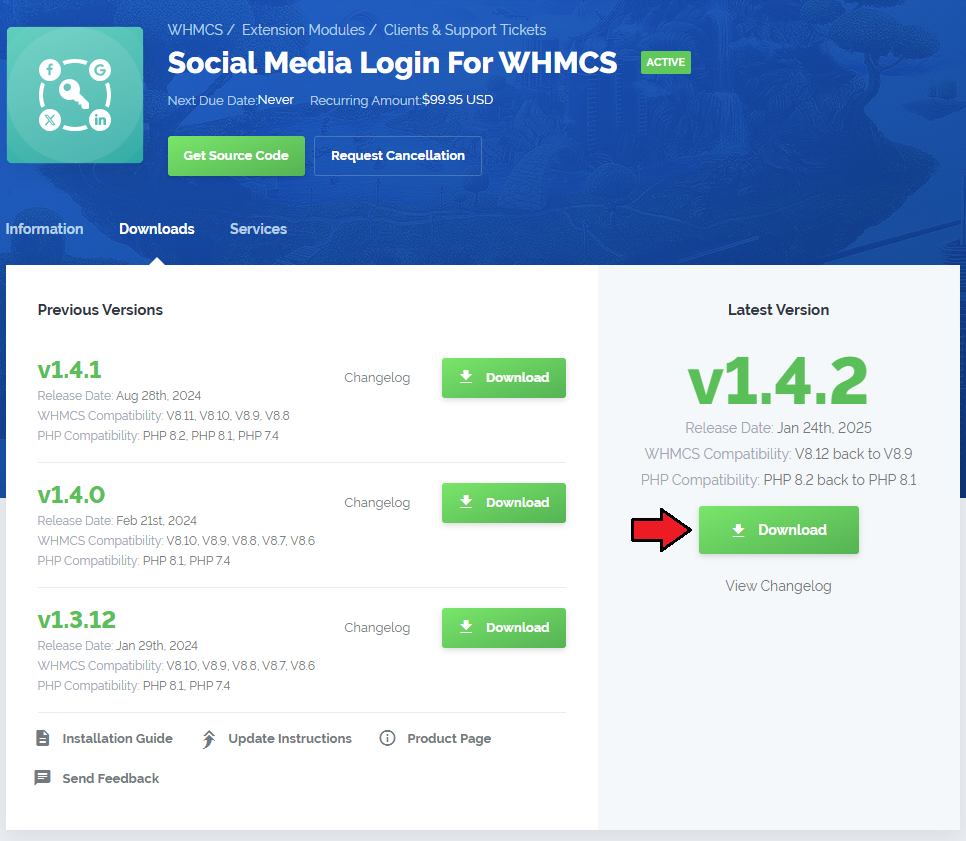
|
| 2. In the downloaded file you will find two packages that support different PHP versions. As presented on the screen below, the first one is dedicated to PHP 7, while the second one is aimed at PHP 5.3 up to PHP 5.6. It does not apply to open source versions. Note: You can check current PHP version in your WHMCS. To do so proceed to 'Utilities' → 'System' → 'PHP Info'. |

|
| 3. Extract the downloaded file and choose the one with the right PHP version. Upload and extract the PHP file into the main WHMCS directory. The content of PHP version files should look like this. |

|
| 4. When you install Social Media Login For WHMCS for the first time you have to rename 'license_RENAME.php' file. File is located in 'modules/addons/SocialMediaLogin/license_RENAME.php'. Rename it from 'license_RENAME.php' to 'license.php'. |

|
| 5. In order to configure your license key, you have to edit the previously renamed 'license.php' file. Enter your license key between quotation marks as presented on the following screen. You can find your license key in your client area → 'My Products'. |

|
| 6. Now you have to activate the module in your WHMCS system. Log in to your WHMCS admin area. Go to 'Setup' → 'Addon Modules'. Afterwards, find 'Social Media Login' and press 'Activate' button. |
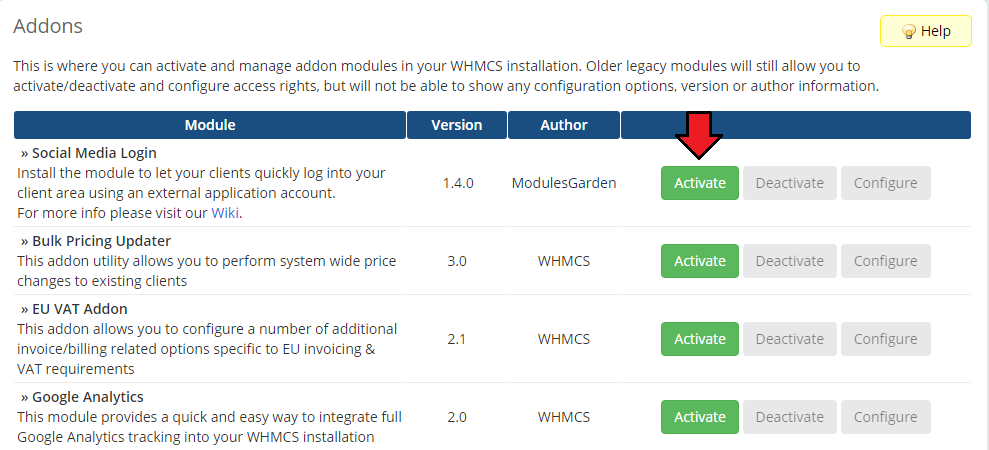
|
| 7. In the next step you need to permit access to this module. To do so, click on 'Configure' button, select administrator roles and press 'Save Changes'. |
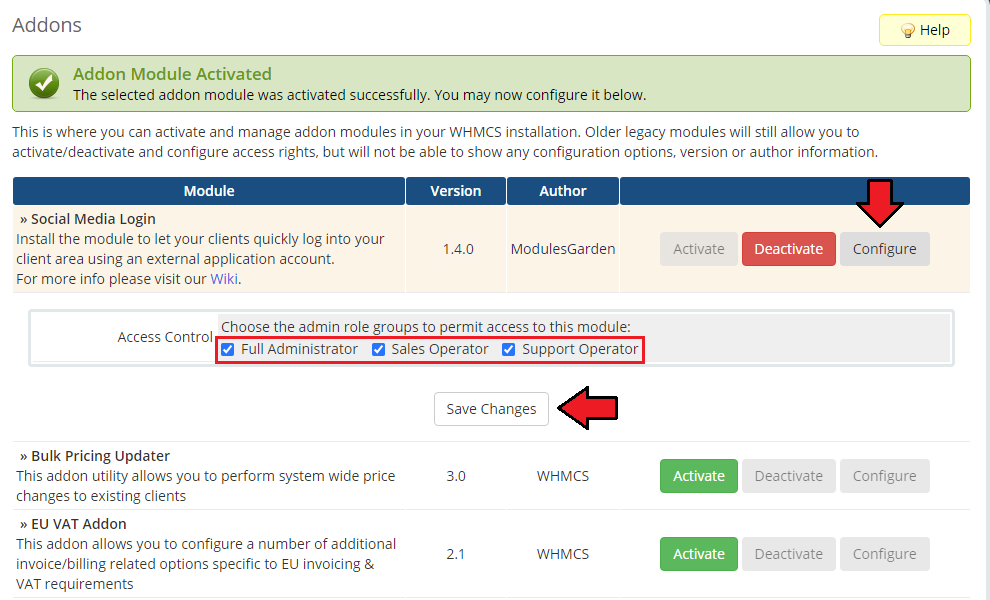
|
| 8. Now you need to correctly insert integration codes. Move to 'Addons' → 'Social Media Login' → 'Integration Codes', you will find there detailed instruction on how to perform the integration. |
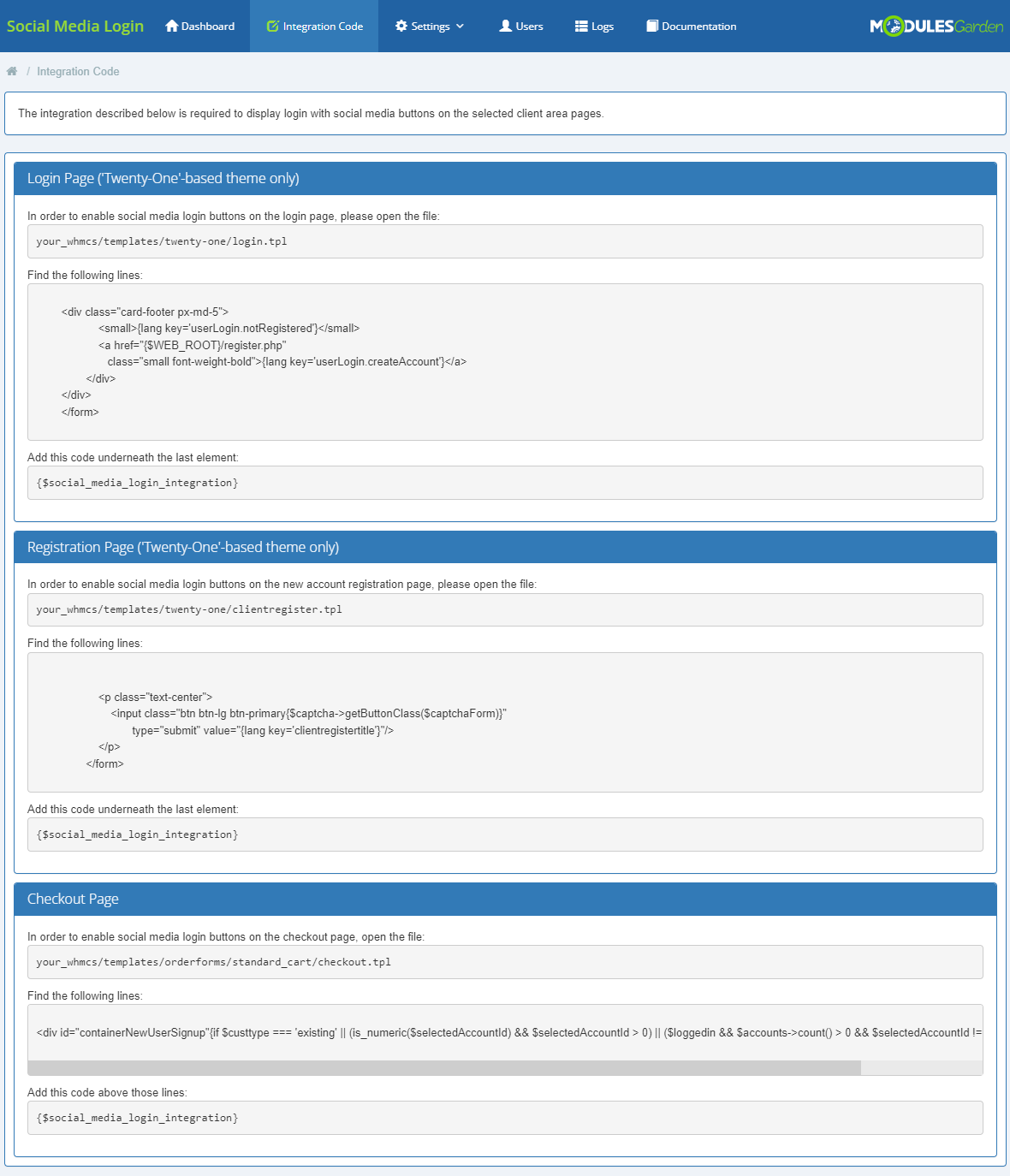
|
| 9. You have just successfully installed Social Media Login For WHMCS! You can access your module under 'Addons' → 'Social Media Login'. |
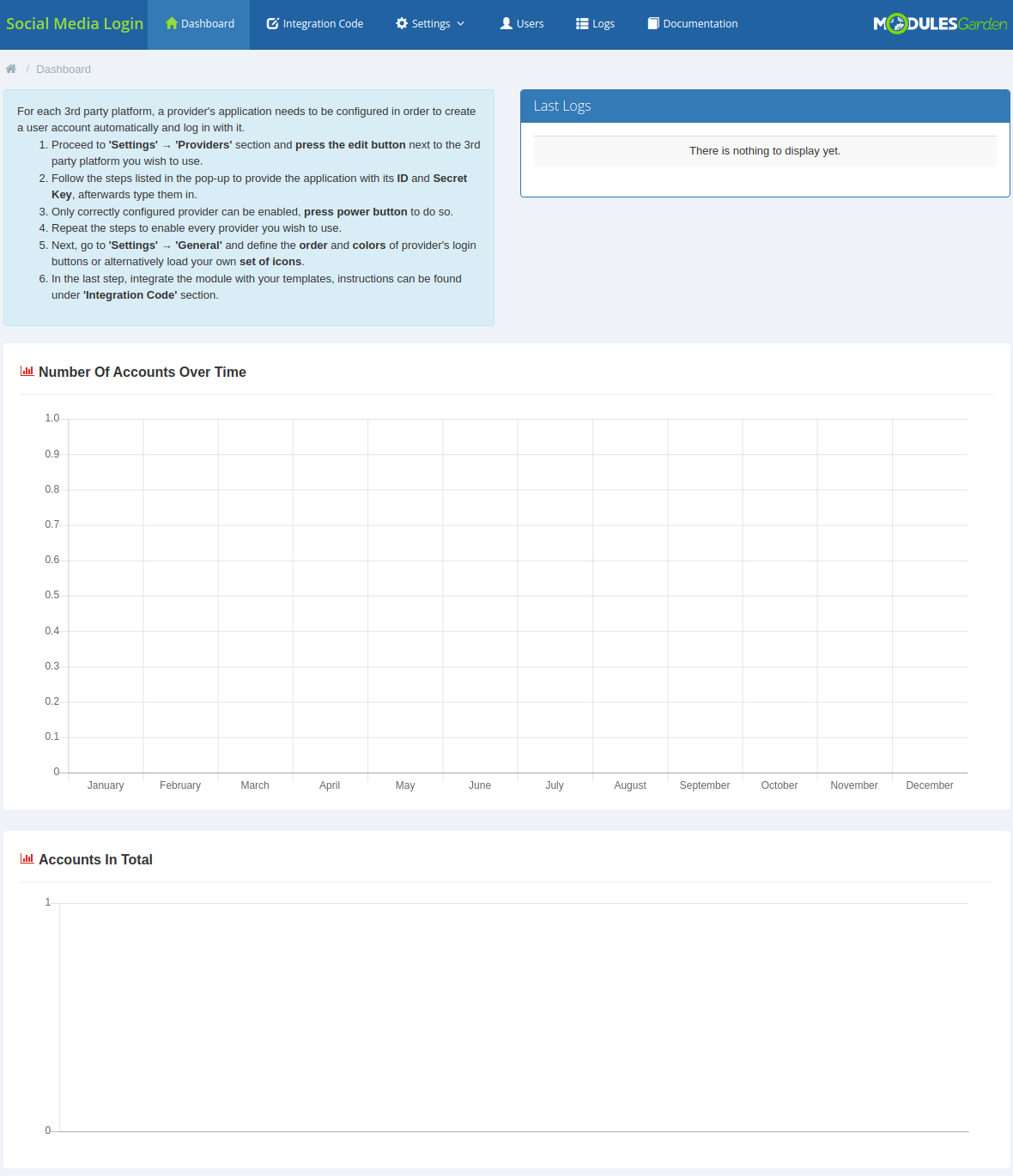
|
Configuration and Management
| Social Media Login For WHMCS brings modern, user-friendly and common solution to your WHMCS to make the usage more enjoyable to your clients. Underneath, you will find a complete guide which will show you how to take a full advantage of the module. |
Configuration
| The module is integrated with six external platforms. Follow the instruction placed in configuration part of each provider to successfully create a link between the provider and the application that will allow quick login. |
Providers
| Under 'Providers' tab, there is a full list of supported providers. In this part you may select which of them you wish to enable. However, before you can enable any, you must configure it firstly. Press appropriate button next to a desired provider. |
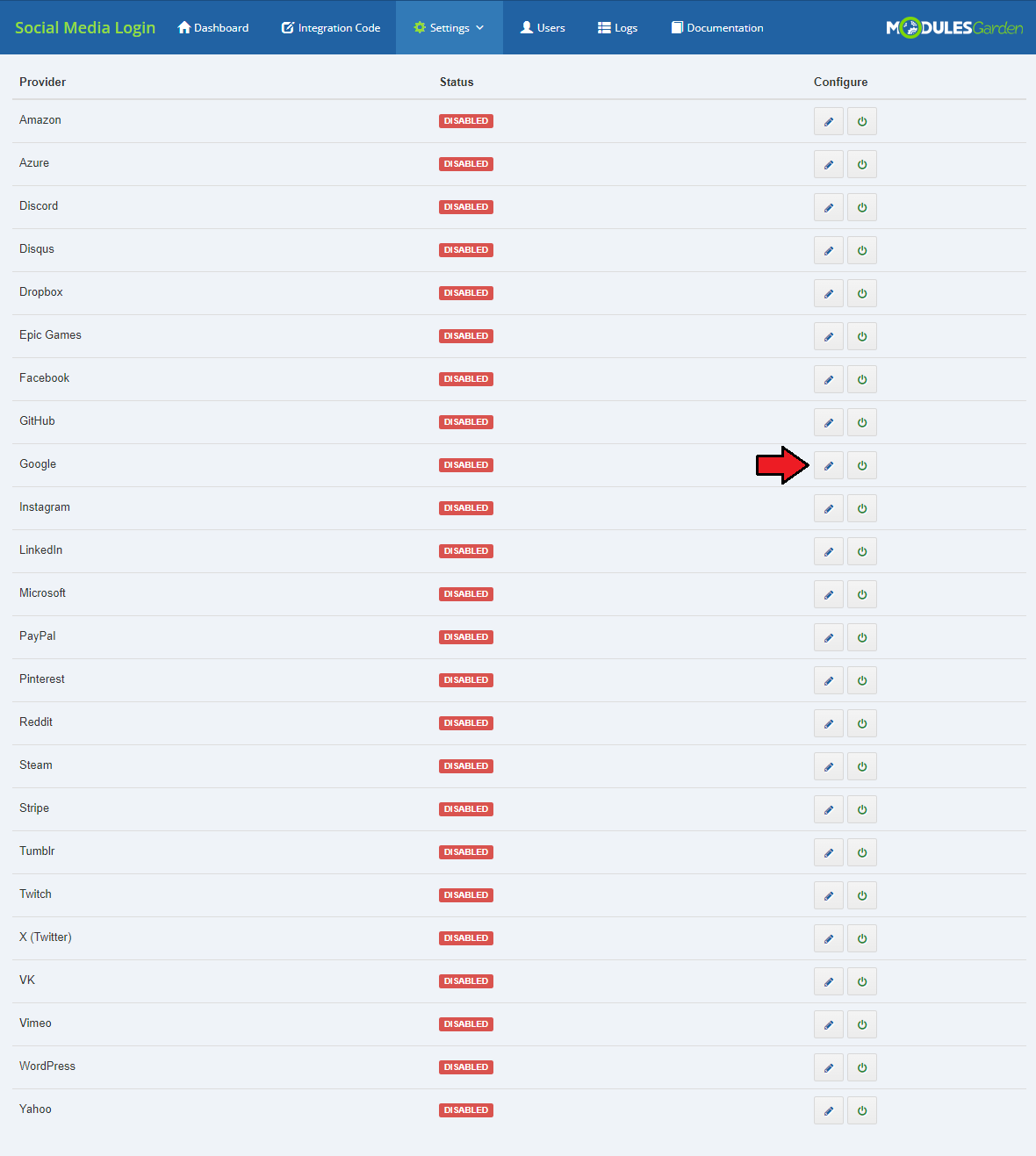
|
| As you can see, all details that must be typed in are 'Application ID' and 'Application Secret'. Above the form you will find a precise instruction on how to create the application and generate required data. Please remember, that the process is individual for each provider. Follow the instructions carefully to successfully generate the application. |
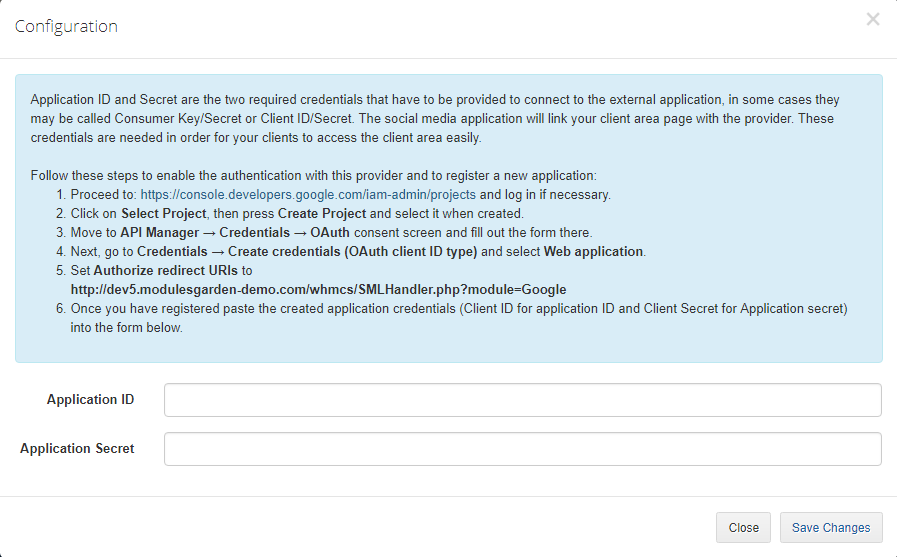
|
| Underneath we will show you an exemplary configuration of a Facebook provider. Take a while to read it and see how the process looks like in practice. |
Exemplary Application
| To show how to proceed with the authentication, we will describe the registration process of a new Facebook application. |
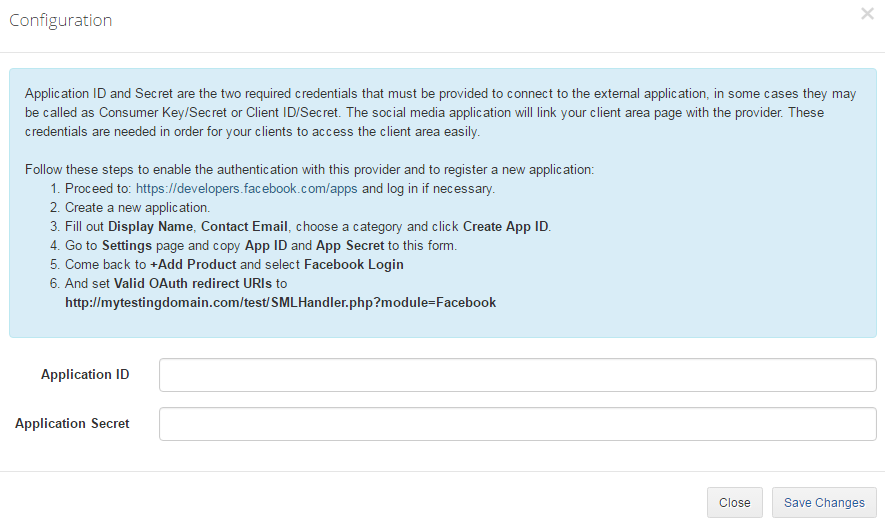
|
| According to the instruction placed in the provider configuration, you must firstly move to https://developers.facebook.com/apps site and log in if necessary. Then, you will have to registered as a Facebook developer if you are not one yet. |
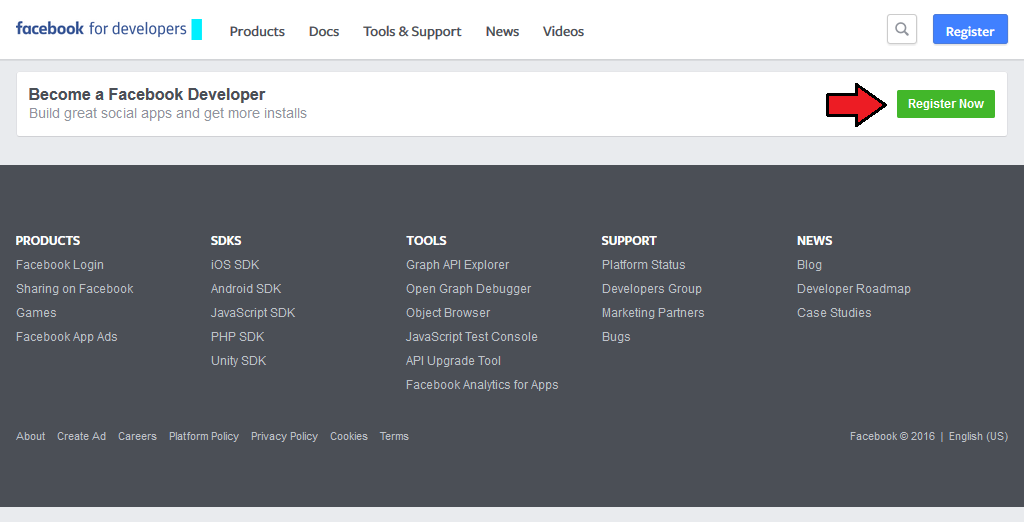
|
| Accept Facebook platform policy and Facebook privacy policy, then verify your account by providing your phone number or a credit card. |
| When you are finally registered as a developer, you can now add Facebook into your app or website. Press 'basic setup' to create an application. |
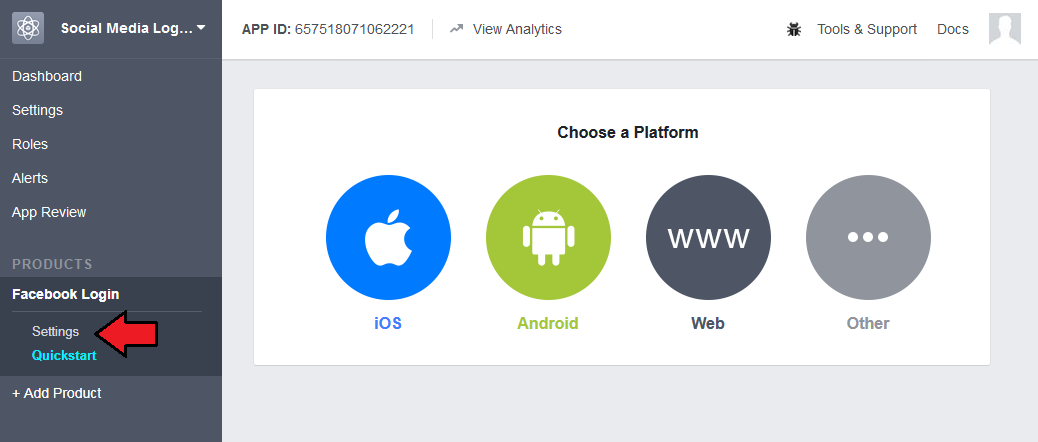
|
| Name your application and type in an email address for contact. Press 'Create App ID'. |
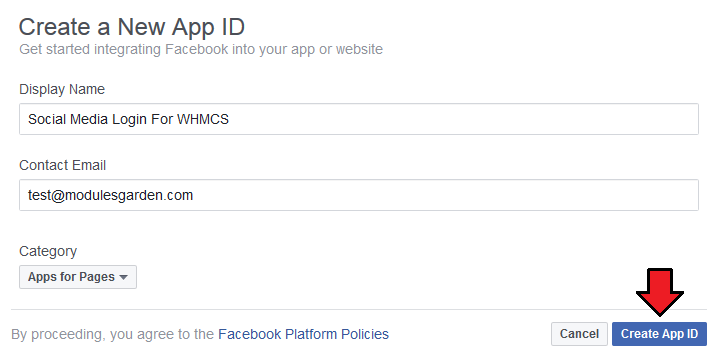
|
| Under 'Settings' section you will find the details that you need the most. Copy application ID and secret (press 'Show' to see it) and save for later use. |
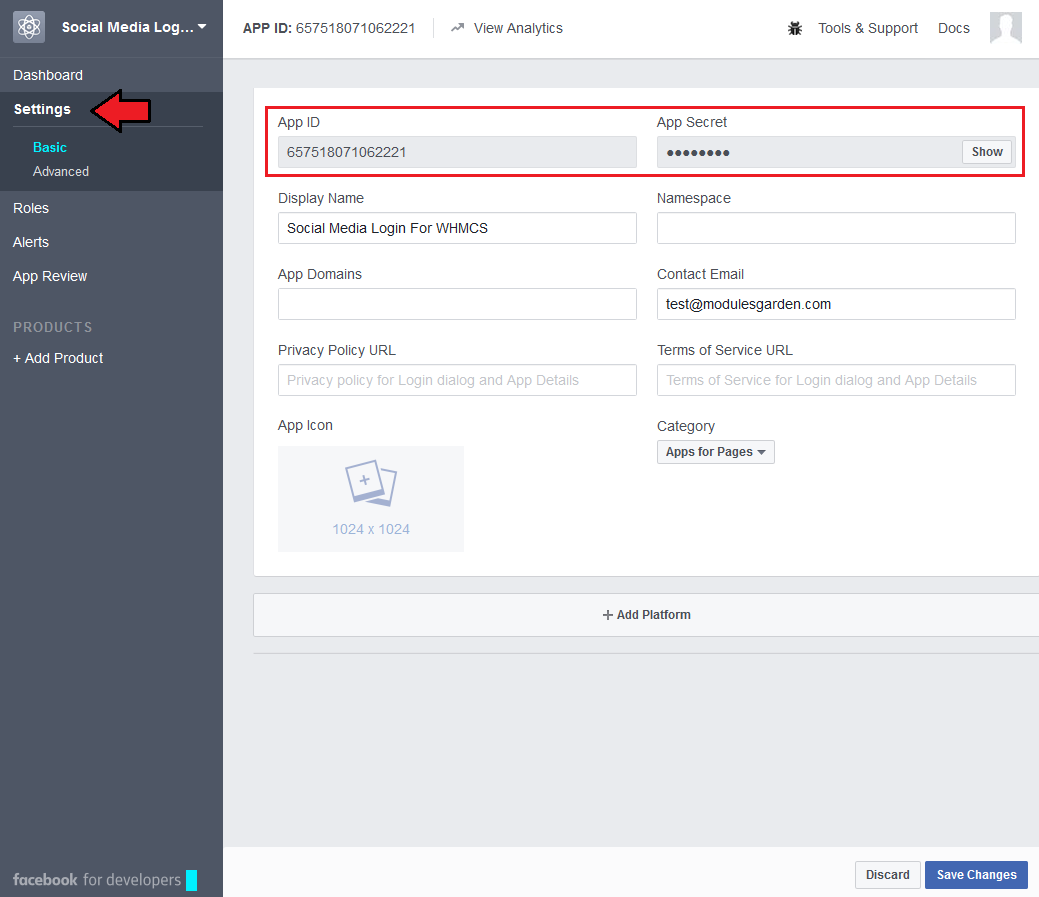
|
| Now, move to '+ Add Product' and find 'Facebook Login ' on the list. |
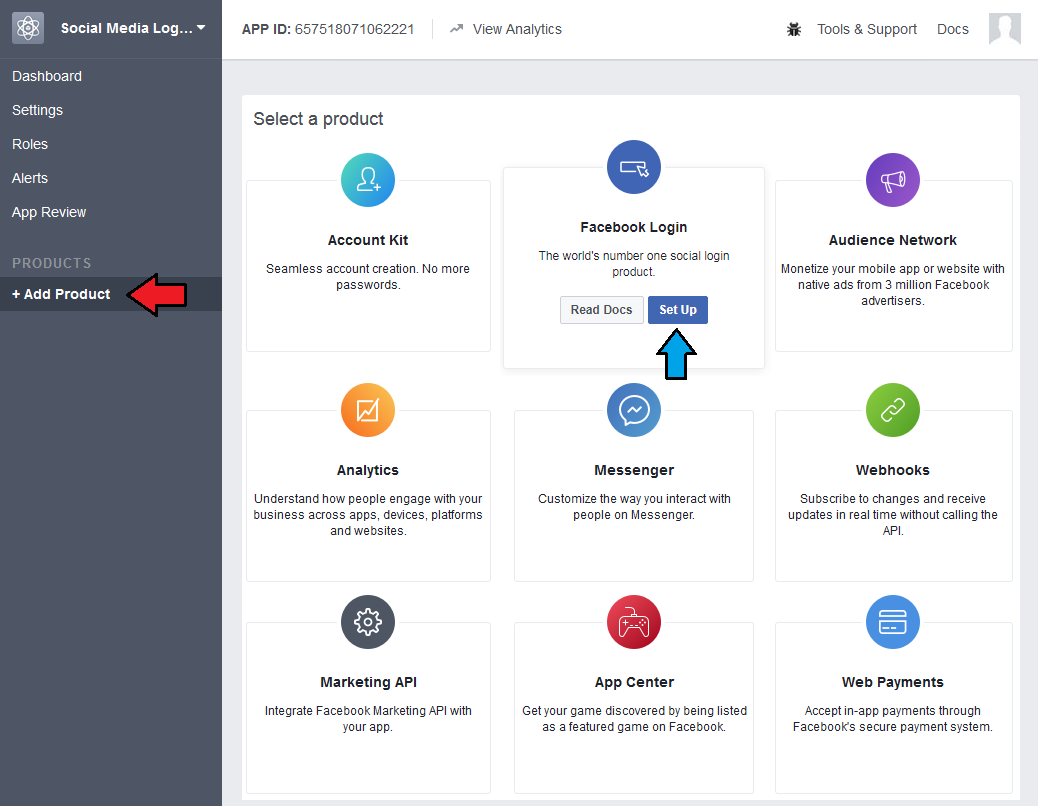
|
| Finally, provide 'Valid OAuth redirect URIs'. You will find a ready one in the addon under the configuration instructions of the provider. Save the changes and come back to the addon. |
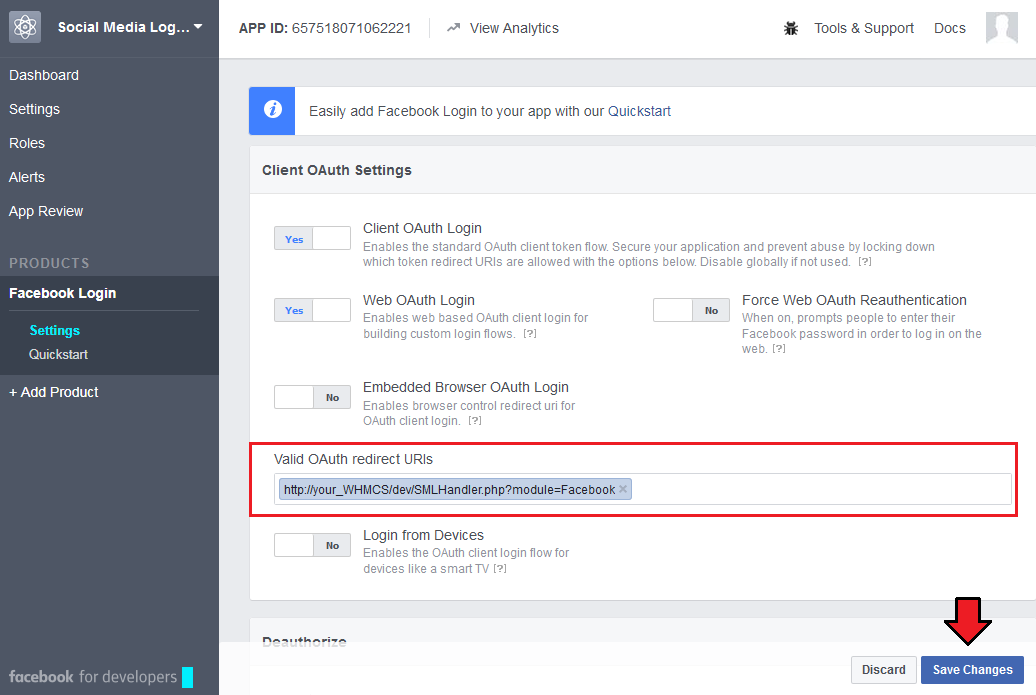
|
| Paste the generated application ID and secret into the appropriate fields and save the changes. |
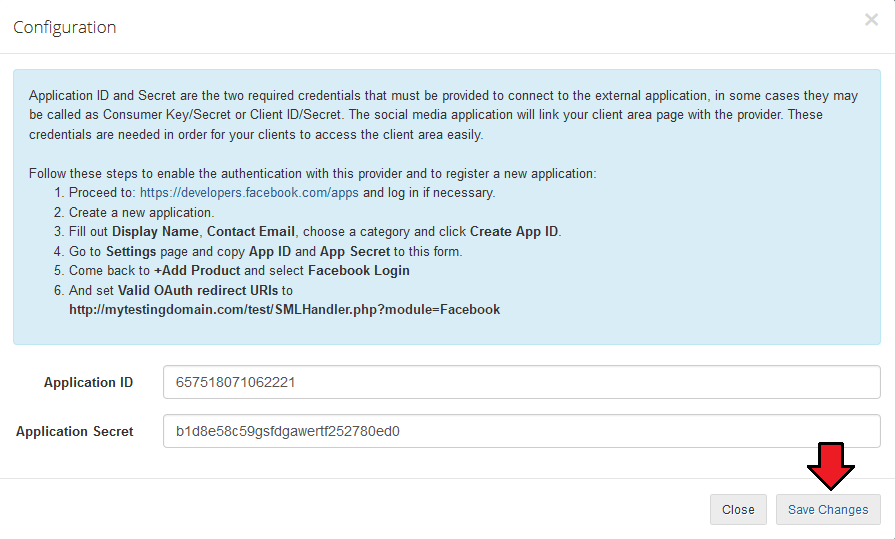
|
| Now you can enable the provider. That is all! |
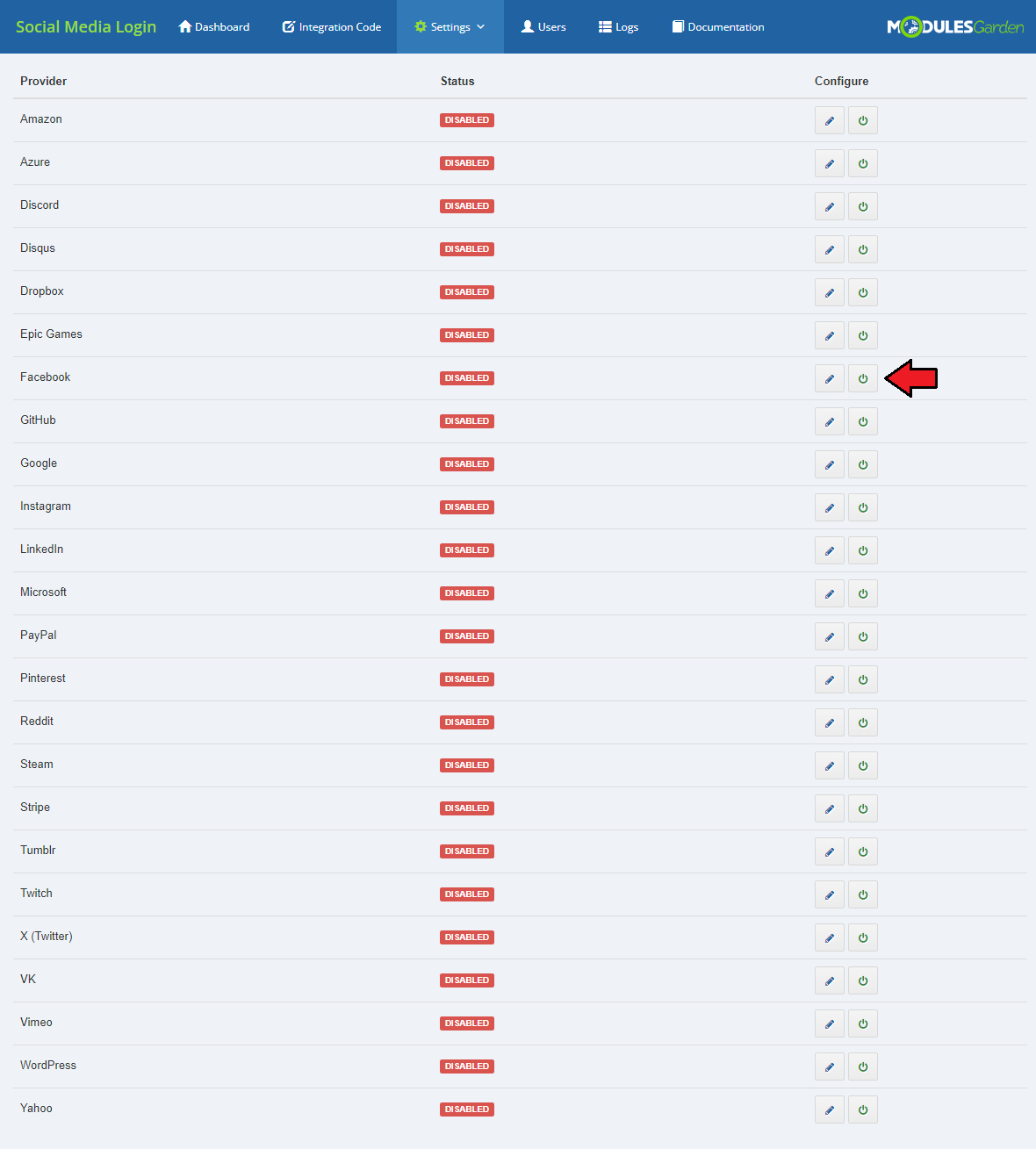
|
Other
Dashboard
| 'Dashboard' of the addon includes only a short guide that is placed to help you quickly move through the configuration. There is also a box with the last five error log entries for your quick view. |
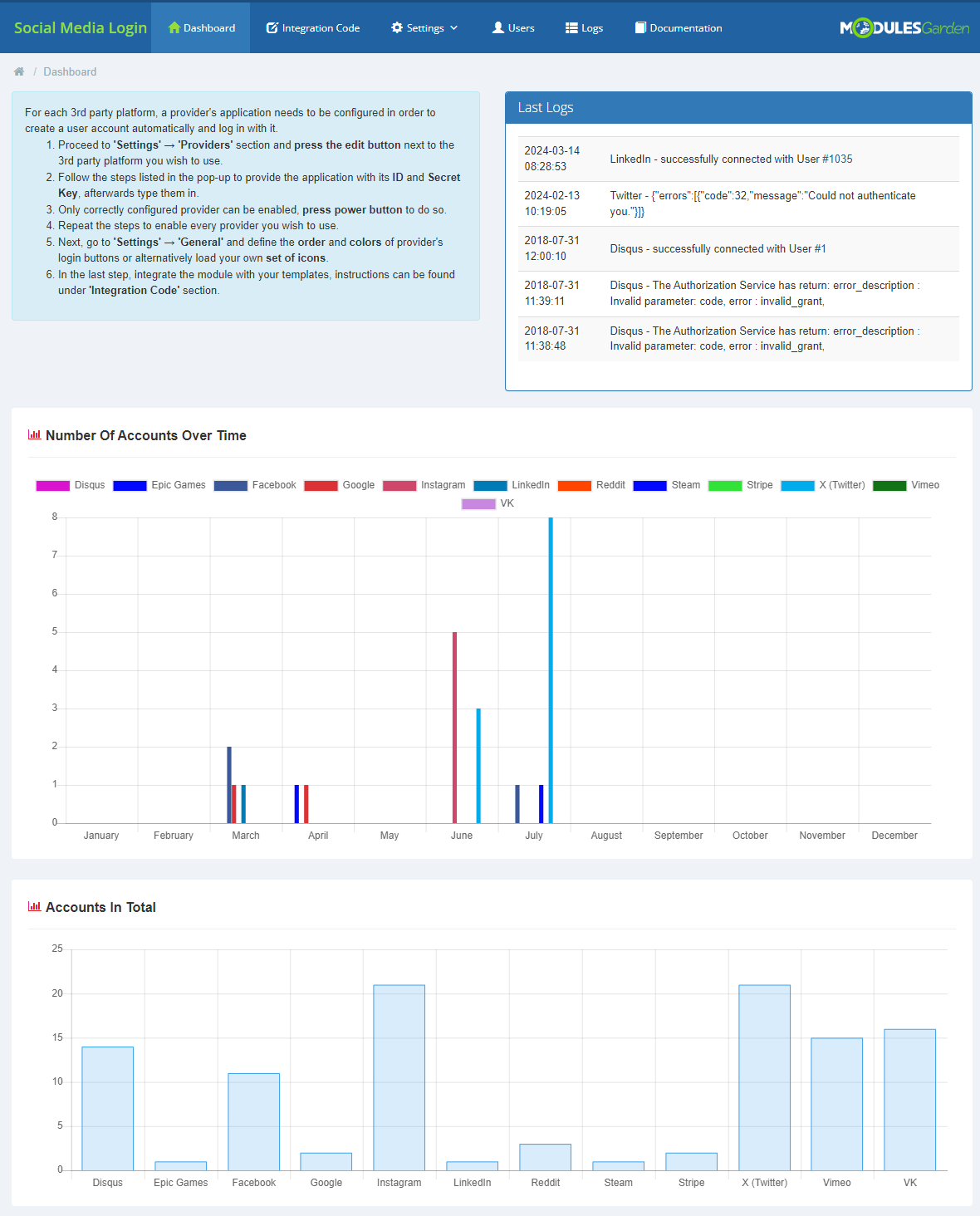
|
Logs
| Under 'Logs' tab you will find all log entries. There are details on any failed action in the module. Check it out any time you need to find some details on the actions taken. |
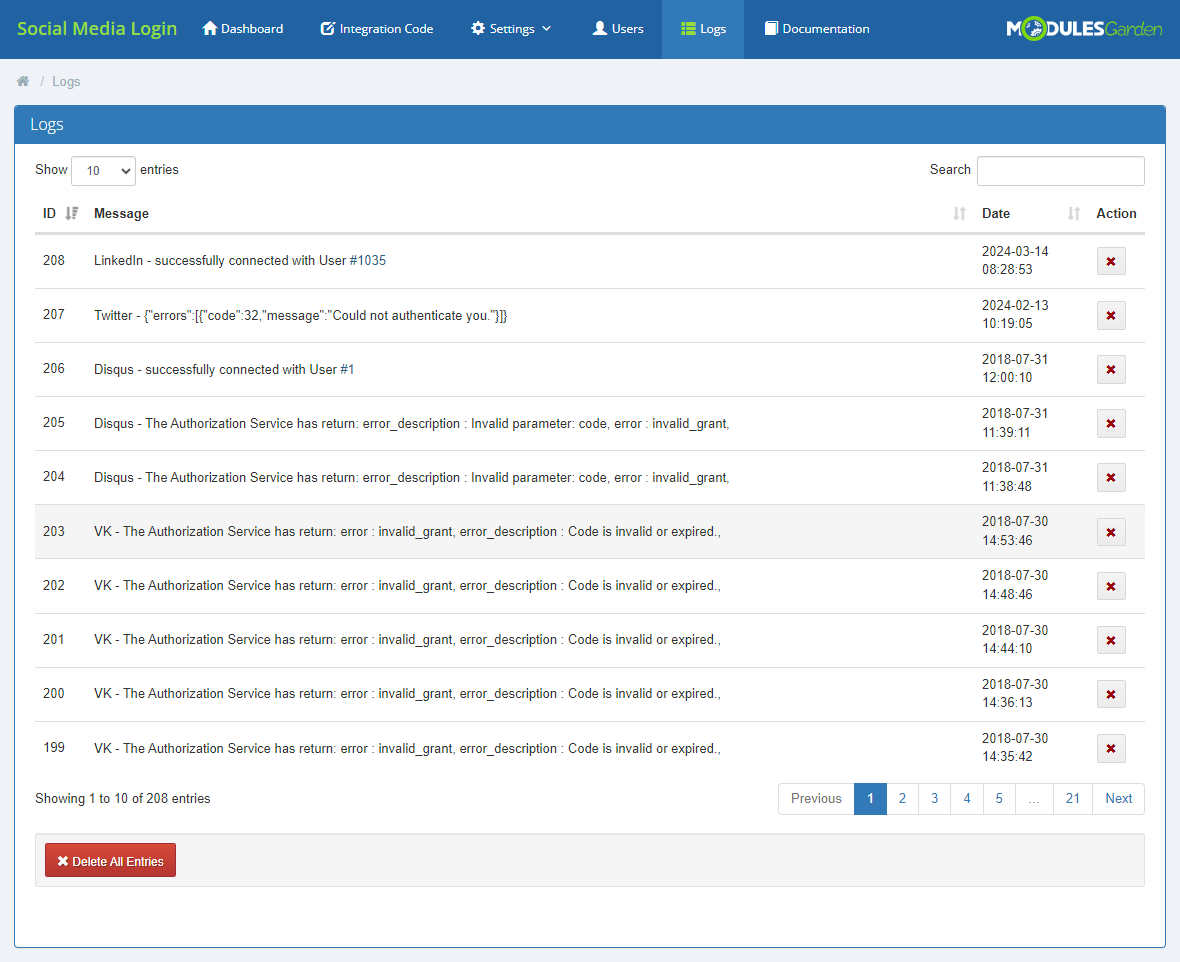
|
Documentation
| The last position in your navigation menu, when pressed, redirects to the article you are currently reading. |
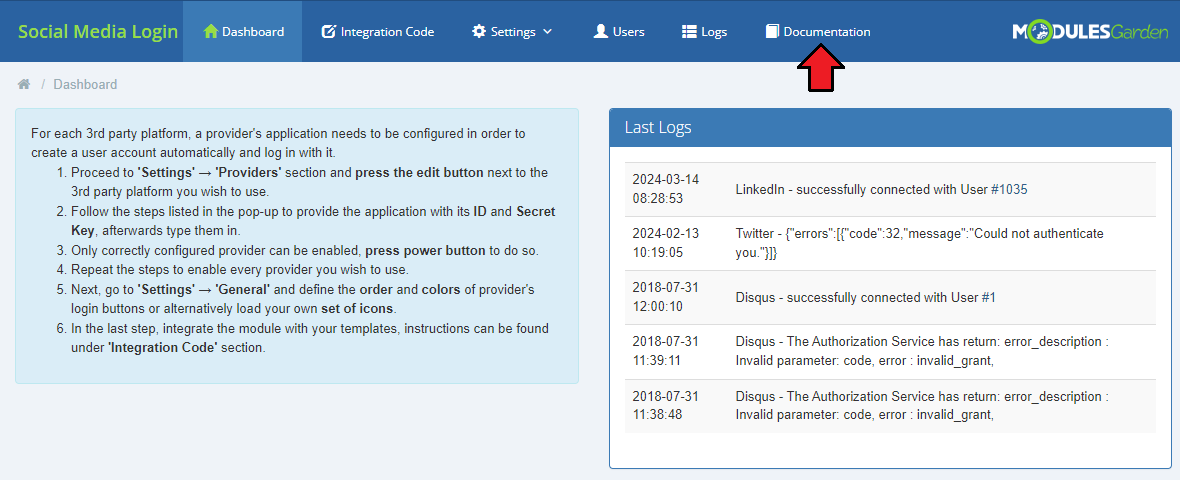
|
Client Area
| Social Media Login For WHMCS interferes with the client area login pages. To allow a full and proper performance of the module you must have previously pasted the integration codes to display the 3rd party platform buttons. Please make sure you have fulfilled step no 7 of our installation instructions. |
Quick Login
| The first place where users may register and then log in with a single click on the application button is the main login page. Users may choose whether they wish to log in with standard details: WHMCS email address and password or log in with their favorite platform. |
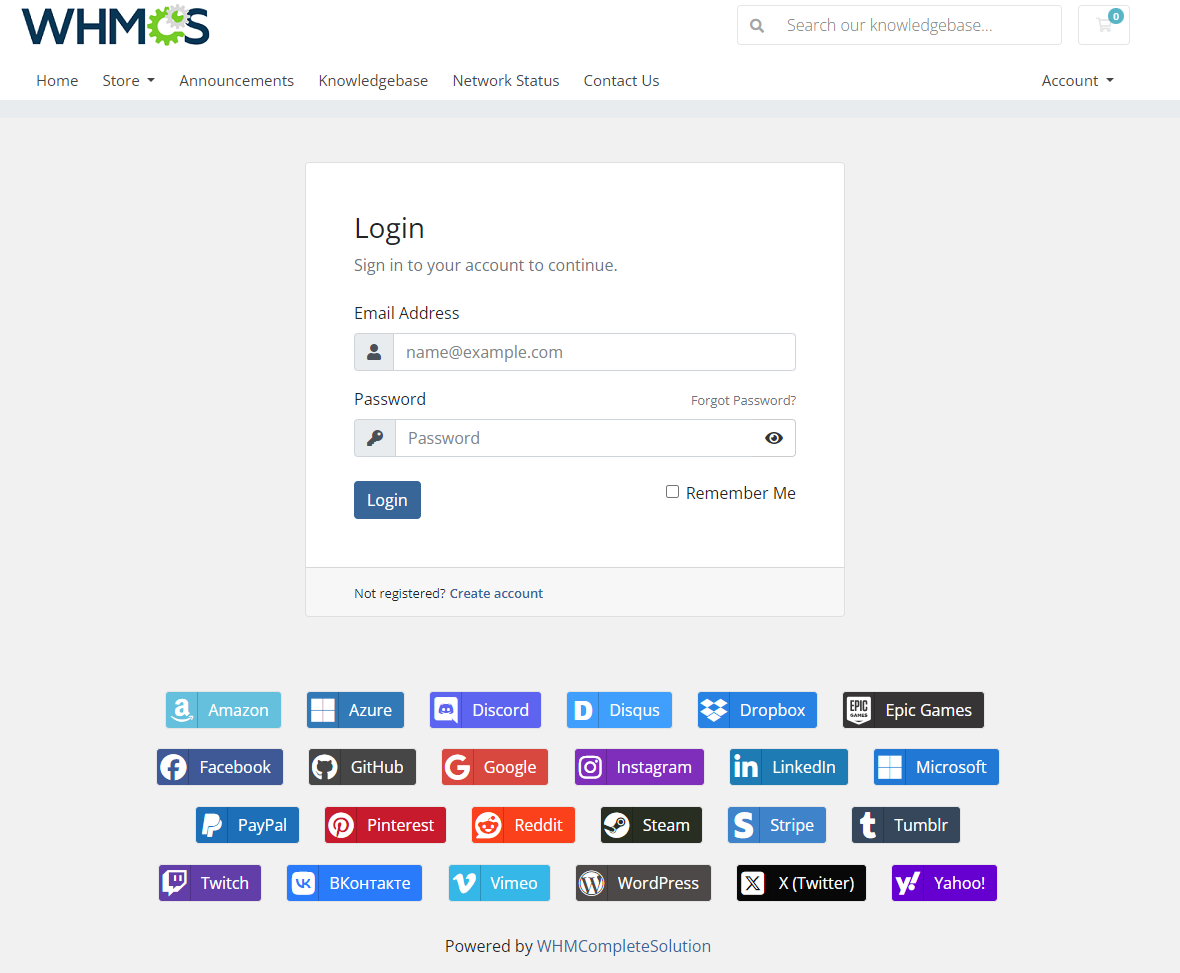
|
| Login with a social media platform is also available from the login pop-up. |
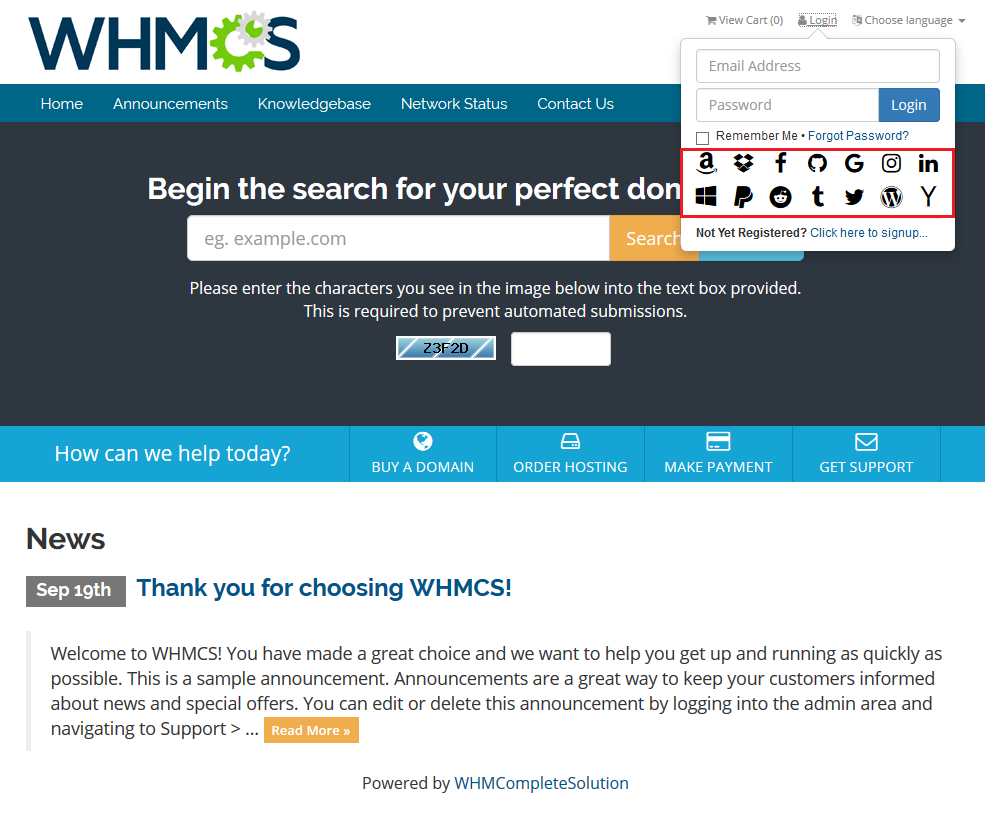
|
| Finally, users may log in with any allowed social media when placing an order. |
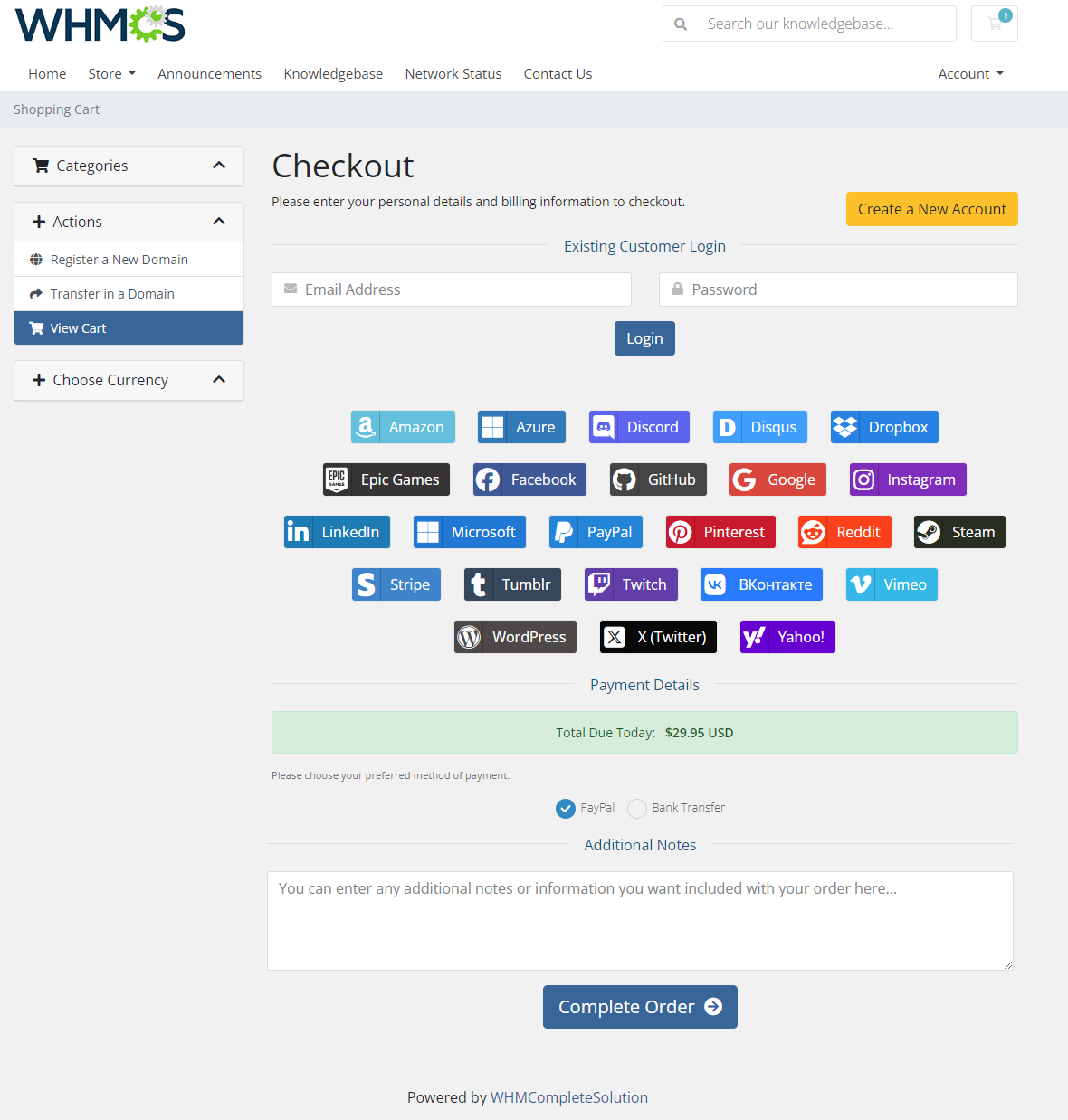
|
| The process is extremely simple, press for example 'Facebook' button (look at the screen above). The user will be redirected to the login page of the social media platform (if currently logged out) and will have to log in there. If the user is constantly logged in, then no redirection is processed. |
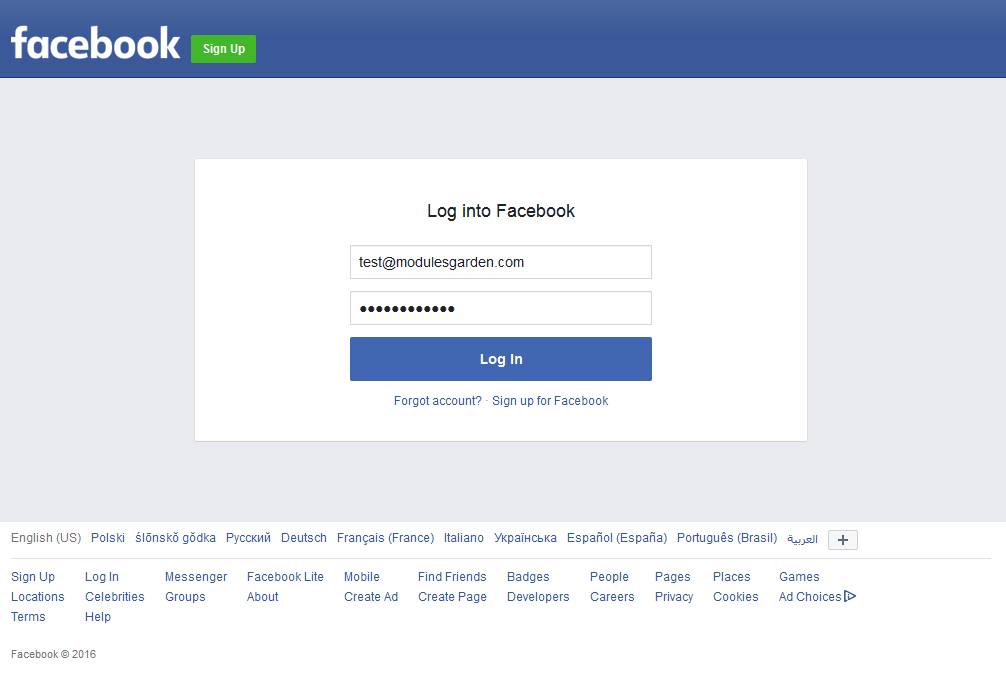
|
| If a user has no account in WHMCS, then the account is automatically created. Any available in the platform data are immediately transferred to WHMCS. You may edit them and provide the remaining ones. |
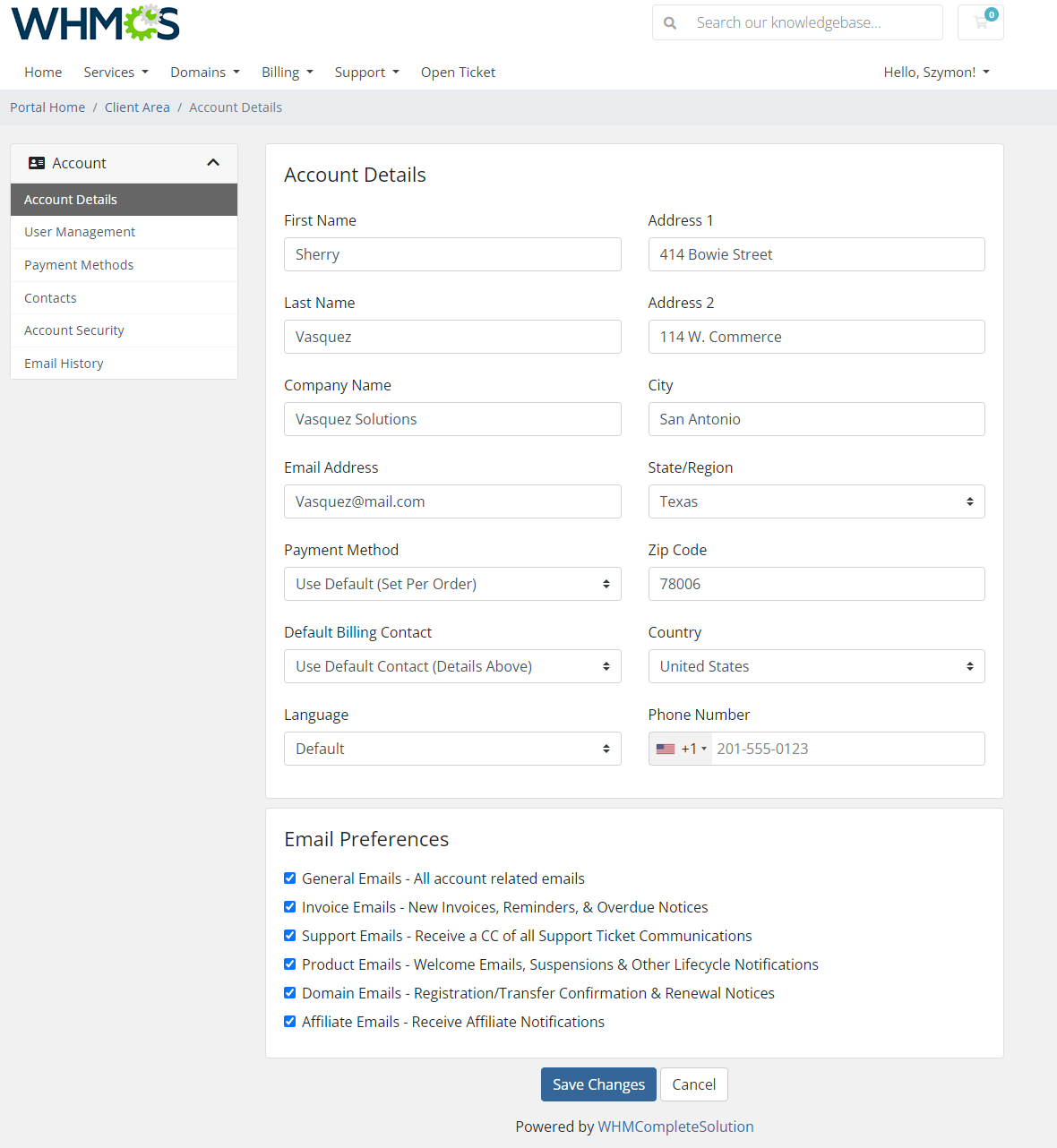
|
Connect Accounts
| There are three providers that allow connecting account with external platforms such as WHMCS. These are:
Press any to log in with. |
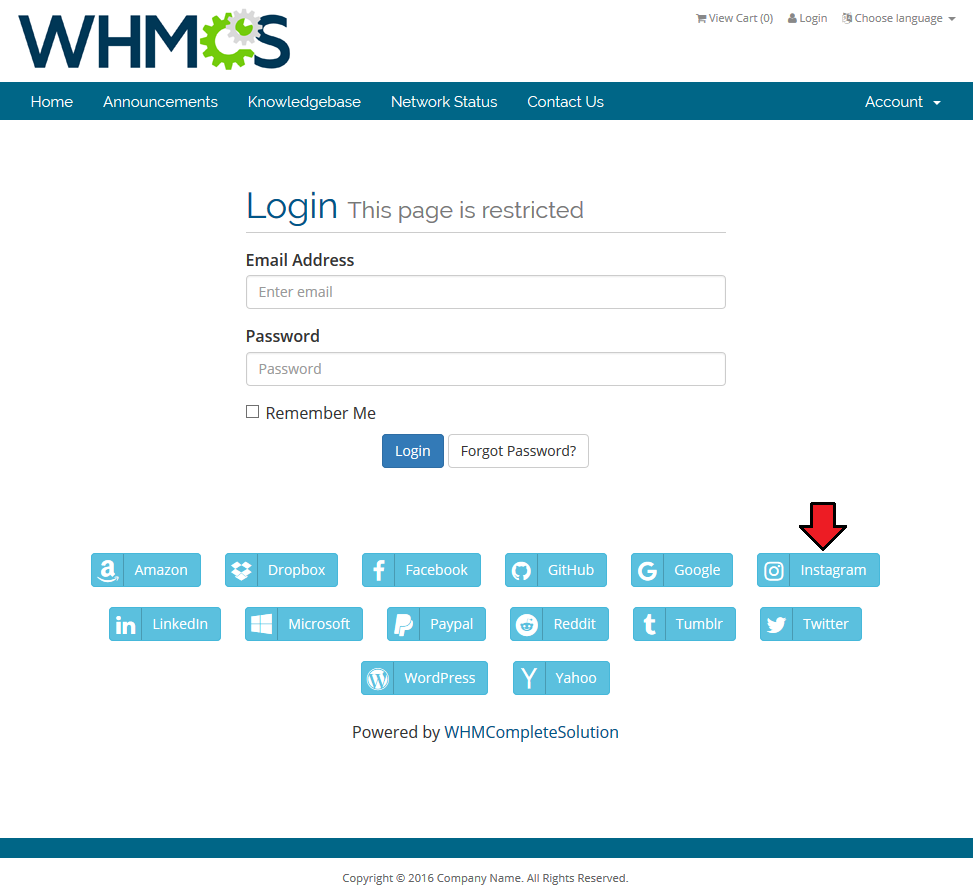
|
| You are now redirected to Instagram page, where if logged in, you asked if you agree to share your account details with the external platform. If you agree, then in WHMCS you may connect your Instagram account with the WHMCS account, press 'Connect With My Account'. |
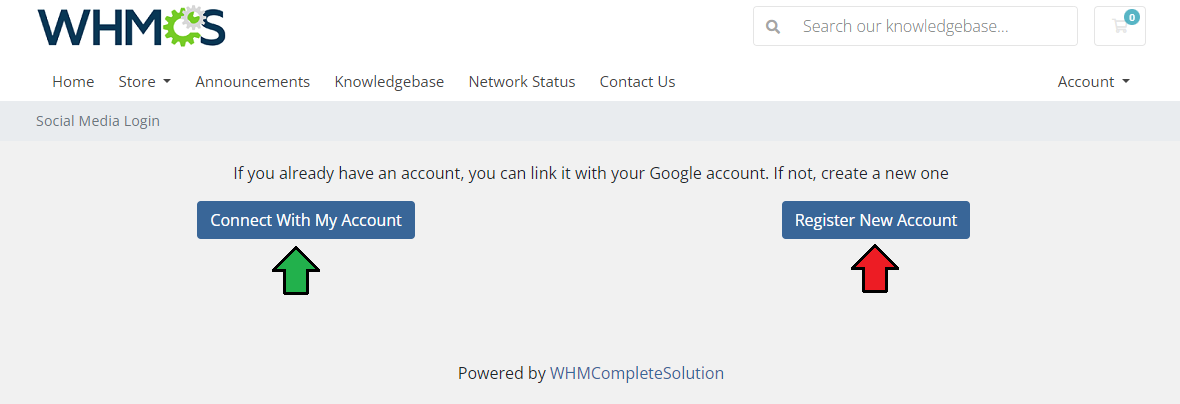
|
| Any time you decide to log in with Instagram, you may use your private details and you will be logged into your official WHMCS account! |
Tips
| 1. If you decided to use Login with Twitter option, make sure your application is whitelisted by the platform administrators. |
| 2. Your customers may use several social media platforms to log in. The only condition is that the email address used in the platform must be the same as the one saved in their WHMCS account. This restriction is not valid for Instagram, Reddit and Tumblr. |
| 3. As this module supports templates system, any changes made in the module's templates files will be saved after the upgrade process. |
| 4. When it comes to our Resellers Center For WHMCS and Social Media Login For WHMCS modules, they are compatible and work faultlessly unless your reseller uses branded domain. |
Common Problems
| 1. When you have problems with connection, check whether your SELinux or firewall does not block ports. |